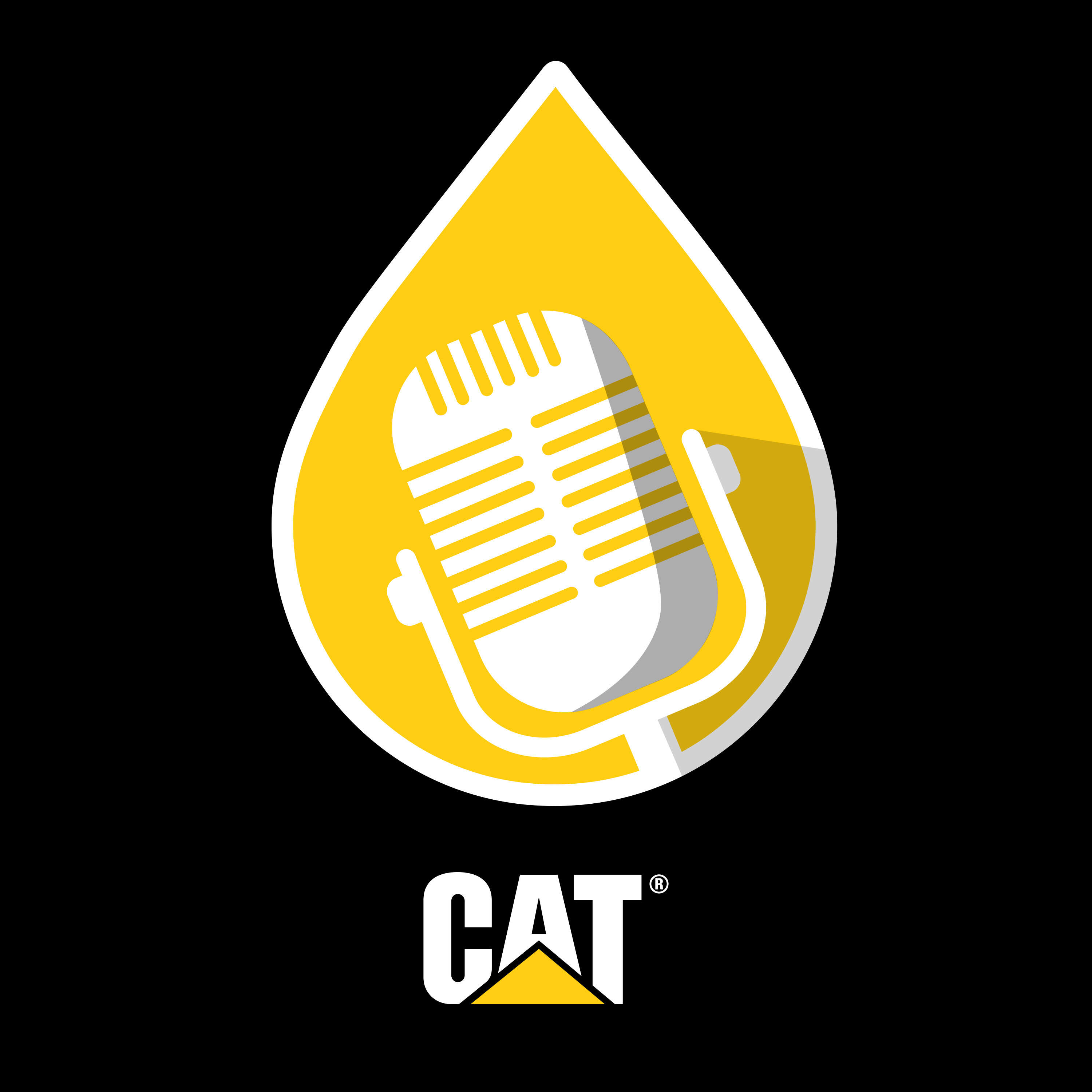[CAT® OIL & GAS] Storage and Preservation
- 0.5
- 1
- 1.25
- 1.5
- 1.75
- 2
Chris Berrie: Hi, I'm Chris Berrie, a Sales Manager here at Caterpillar. Welcome to Cat® Power Podcast, a series of podcasts focused on various subjects within oil and gas. Today we're discussing storage and preservation practices and exploring why that are important. I'm joined today by Austin Roe, from Caterpillar Oil and Gas, one of our application specialists who will help walk us through these best practices. Hi Austin, welcome to the call.
Austin Roe: Hi Chris.
Chris Berrie: So Austin, let's start off with the basics. What are storage and preservation practices and why are they important?
Austin Roe: These practices involve cleaning, protecting, and monitoring your equipment when it's out of operation. Following these practices will reduce risks of corrosion and component damage during downtime. Another benefit is improved start-up performance once the product returns to operation. So when I think about maintenance practices, I think of oil changes, coolant changes, and filter replacement. I think of activities to keep the equipment running and extend the life of the product. After all, these products are designed for operation, but what if your equipment is not running? What do you do if your Cat inaudible out of operation? And how do you maintain it under these circumstances? The good news is we have storage and preservation practices for these cases. The Cat dealer network is equipped to provide the parts, tools, fluids, and reference material, along with the services needed to properly maintain and extend the life of your product. If you foresee your equipment being out of operation for an extended period of time, whether that be three months, six months, a year, storage and preservation practices should be considered.
Chris Berrie: Right. So who should be concerned about storage and preservation of the product and at what stage of the process?
Austin Roe: Whether you're an operator or an equipment manufacturer, storage and preservation maintenance needs to be considered. This may include new equipment waiting in inventory or equipment in the field that's not running.
Chris Berrie: With that in mind then, how do these practices impact operations?
Austin Roe: Great question. I really like to use analogies when it comes to this topic and two come to mind, agriculture and firefighting. Growing up in central Illinois, I was surrounded by farming and some of this equipment is seasonal, so it must be stored for extended periods of time. Firefighting equipment is another great example. That equipment must be ready to go at a moment's notice and the oil and gas industry can work similar to these analogies. In the oil and gas industry, these practices might be driven by start-up or completion of projects, or perhaps the status of the market. All three of these cases, farming, firefighting and oil and gas, all involve highly engineered equipment that must be stored for extended periods of time. And come time for operation, the equipment needs to be ready to go.
Chris Berrie: Austin, with that in mind, what can go wrong if you don't do proper storage and preservation practices?
Austin Roe: Okay. So for a worst case scenario, here's a good example for you. Let's say you put your equipment into storage and disregard a storage or preservation practices. A year later, you have a project that needs immediate support. Remember that firefighting example? Your team proceeds to start up your equipment, but there's a problem. The equipment was not maintained during storage and was stored in a human environment and it's damaged from corrosion. Now you have to go into unplanned servicing and repairs. This is a worst case scenario that could potentially have been avoided by considering our storage and preservation practices. You likely would still need to perform scheduled post storage procedures, but this would have been a planned effort and your focus could be directed towards the project and not unplanned servicing and repairs. The old saying, an ounce of prevention is worth a pound of cure, good storage and preservation practices are the ounce of prevention.
Chris Berrie: Thanks, Austin. Can you further expand on what these practices are?
Austin Roe: I'm happy to. You can divide these activities in three categories or phases. You got pre storage being the first phase, maintenance is during storage and then post storage, the third phase. Pre-storage involves getting equipment ready for downtime and this involves assessing the conditions, starting a log book, identifying the equipment to be stored. Maintenance, that second phase, involves keeping an eye on the equipment during storage. Performing regular inspections is an example of this. Reapplying rust preventatives as needed, that's another example. It is not advised to put equipment into storage and forget about it, especially over the longterm. And then post storage, that's that third phase, is focused on getting the equipment ready for operation. After talking about those three phases, there's an additional aspect here, and I want to be very clear. Storage and preservation is not a one size fits all activity. I'm talking about some of the high level activities here, but there's a lot of details involved, and that's why I want to recommend going and working with your dealer to make sure your equipment is properly maintained. They have the specific procedures that you need to follow.
Chris Berrie: Austin, you mentioned, not one size fits all. How does this vary by product?
Austin Roe: Caterpillar offers various products to support the oil and gas industry. An owner could be operating anything from a dual fuel engine for well stimulation to an electric motor for gas compression. An electric motor will have different storage procedures than say an engine. With an electric motor, running the space heater to reduce the risk of internal condensation is a good practice. On a diesel engine, you have a fuel system and additional fluids to maintain. But in these cases, two different products, there are common practices. On both engines and motors for long- term storage, it's a good practice to pre lubricate bearings and perform a drive- line rotation as recommended by the supporting service literature.
Chris Berrie: Austin, when you talk about storage and preservation, it doesn't just mean the iron, right?
Austin Roe: Right. When maintaining your Cat equipment, dependent upon the equipment, you're going to deal with lubricants and coolants. Fluids are an integral part of your equipment and the right type of lubricant or coolant should be used. These are details you do not want to overlook. Sometimes you'll hear the term,"Service your coolant," or "Service you're lubricating oil." Servicing fluids is a general term that includes activities like replacing oil, changing filters, testing coolant. Performing these sort of activities will be based on duration of storage and the product being stored.
Chris Berrie: Do these same procedures apply to new equipment.
Austin Roe: Yes, they do. Even if a product has yet to operate on site, they still need to be maintained. Here's an example. Let's say you were an equipment manufacturer and you just purchased a Cat engine to be installed on some machinery and the project just got put on hold. As a result, the engine is not going to be used right away as intended. The equipment might be new, but it should still be maintained, regardless. Some of our products can be purchased with a storage and preservation package and that's added at the factory. If this option is added, it is still recommended to maintain your products in storage. This is a pretty nice option that if interested, should be mentioned to your local dealer, when purchasing the new product.
Chris Berrie: On that topic, where can an owner or operator find this information?
Austin Roe: Go to your Cat dealer? Your Cat dealer is equipped to provide the parts, fluids, tools, and detailed procedures to help maintain and service your equipment.
Chris Berrie: And before we close out, any other reminders for our listeners?
Austin Roe: Yes, I do want to remind owners and operators of the importance of safety when performing maintenance activities on your equipment. You want to be sure to wear the appropriate PPE and when working with maintenance materials, be cognizant of their corresponding safety data and be considerate of those around you.
Chris Berrie: Austin, thanks for your time today. For more information about storage and preservation, visit cat.com/oilandgas and follow us on LinkedIn or Facebook at Cat Oil & Gas. Thanks again. See you soon.
DESCRIPTION
Reduce the risk of corrosion and damage and make sure your engines, electric motors, transmissions and pumps are ready to go when market conditions change or new projects get underway.


